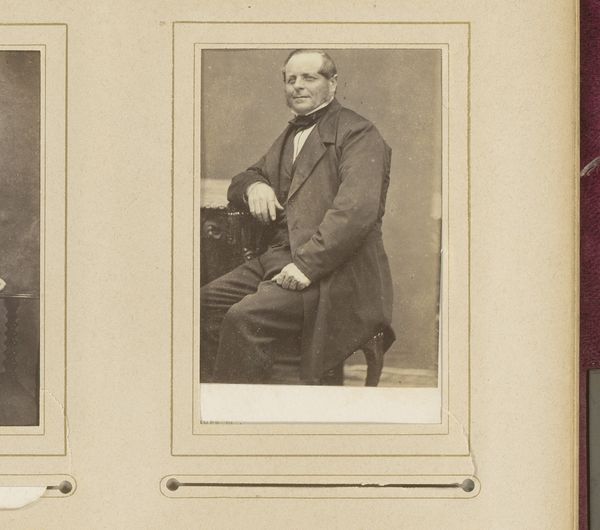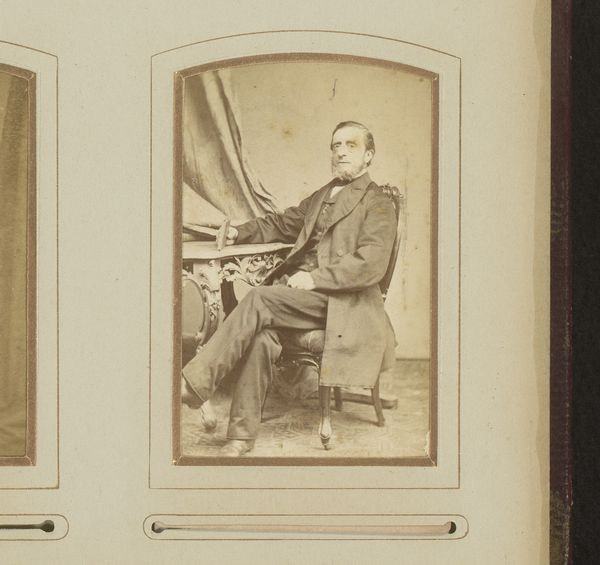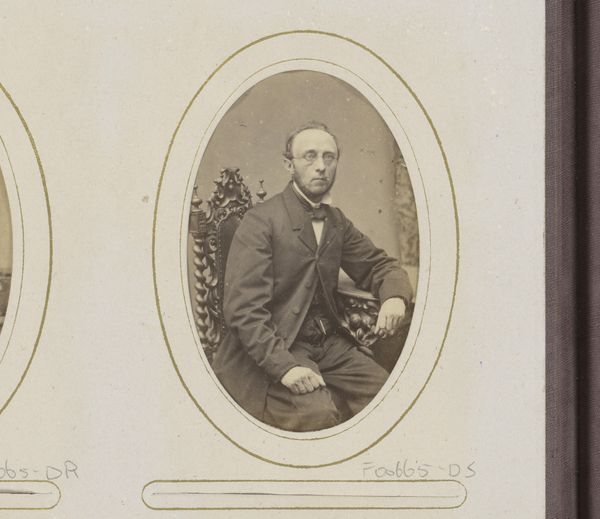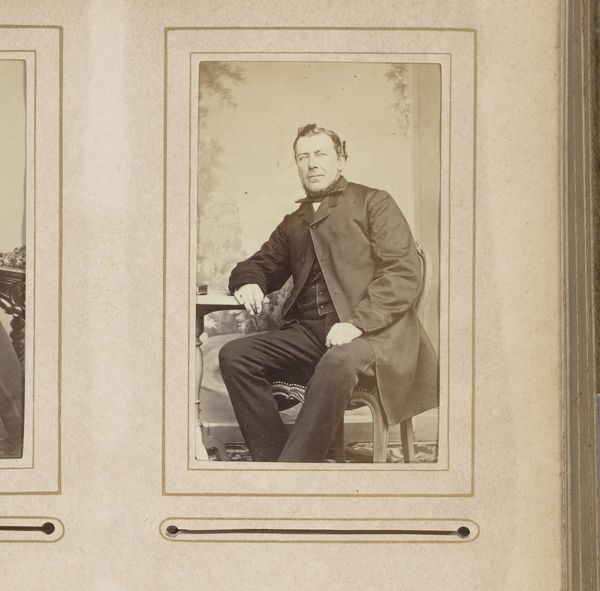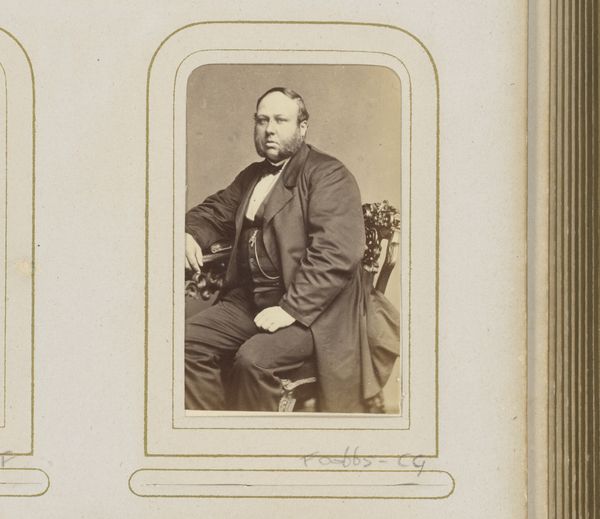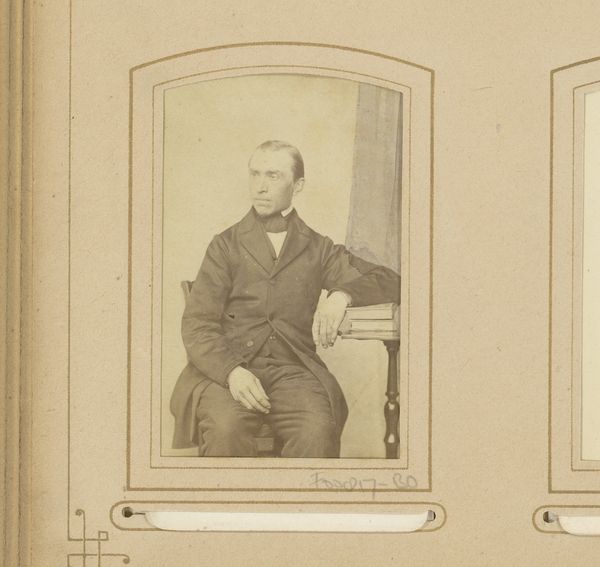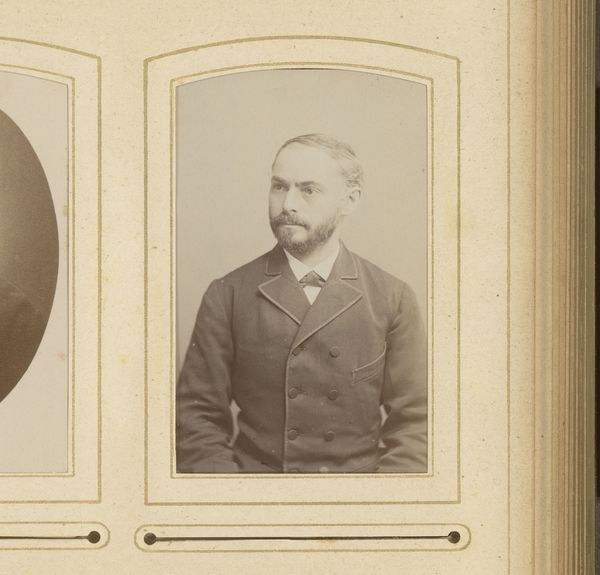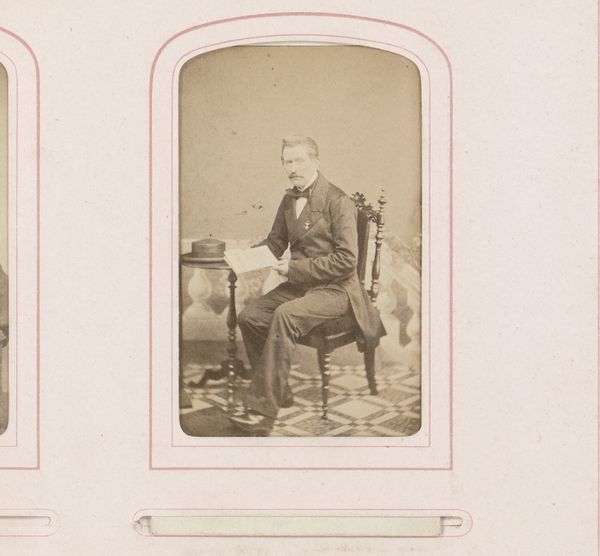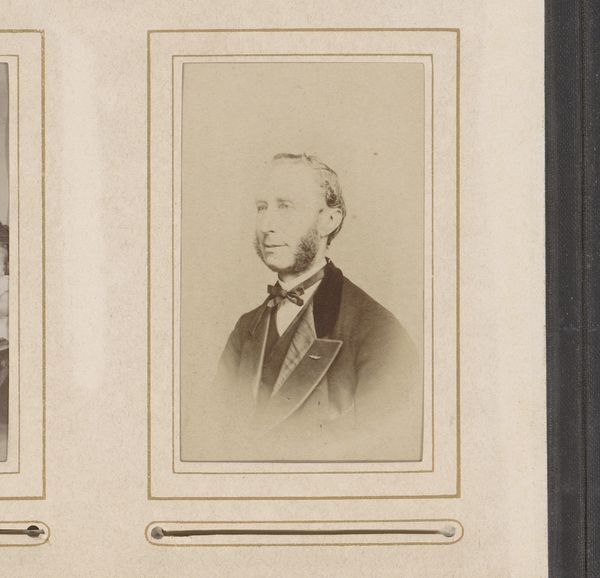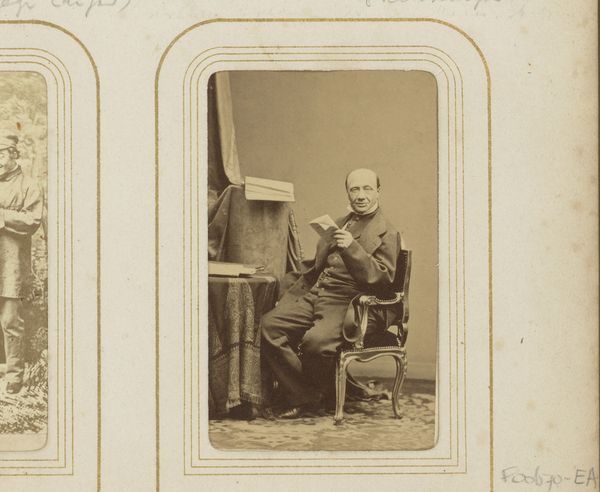
photography, albumen-print
#
portrait
#
photography
#
historical photography
#
19th century
#
genre-painting
#
albumen-print
Dimensions: height 83 mm, width 50 mm
Copyright: Rijks Museum: Open Domain
Editor: This is a fascinating albumen print, "Portret van een zittende man met boek" by M.M. Couvée, dating between 1860 and 1890. He's posed so formally, but I'm curious about the materiality of the photograph itself – the paper, the process. What aspects stand out to you? Curator: Considering the social context of the mid-19th century, we should really look at the production of albumen prints. What chemicals, what techniques of printing and manipulation were employed? Who profited from these new technologies, and how did this material process impact portraiture at the time? The albumen process itself – using egg whites – transformed photographic prints, giving them a particular gloss and sharpness, becoming very popular as photography moved further into commercial sphere. Editor: So, you're saying that understanding the technical process helps us understand its cultural role? Curator: Exactly. We can see photography becoming increasingly accessible, however albumen prints, although commercially viable, still maintained an exclusive status for the sitter. This brings forth questions about the status of the sitter: Why was his image important, or what need to be communicated with it? How was the material production implicated in the creation and the consumption of the portrait? Editor: That’s fascinating. I never thought about photography in terms of consumption like that. It encourages one to investigate how something is not only made, but consumed. Curator: Indeed. The photograph as an object, circulating within a specific economic and social framework, and its impact thereof. The mass production of albumen prints coincided with the rising middle class who wanted their image recorded. So what labour and materials allowed that accessibility? Editor: This lens on the materiality really changes how I see this portrait and its time period. Curator: Hopefully this insight, analyzing process, will help understand how to situate material practice at the centre of historical production!
Comments
No comments
Be the first to comment and join the conversation on the ultimate creative platform.
